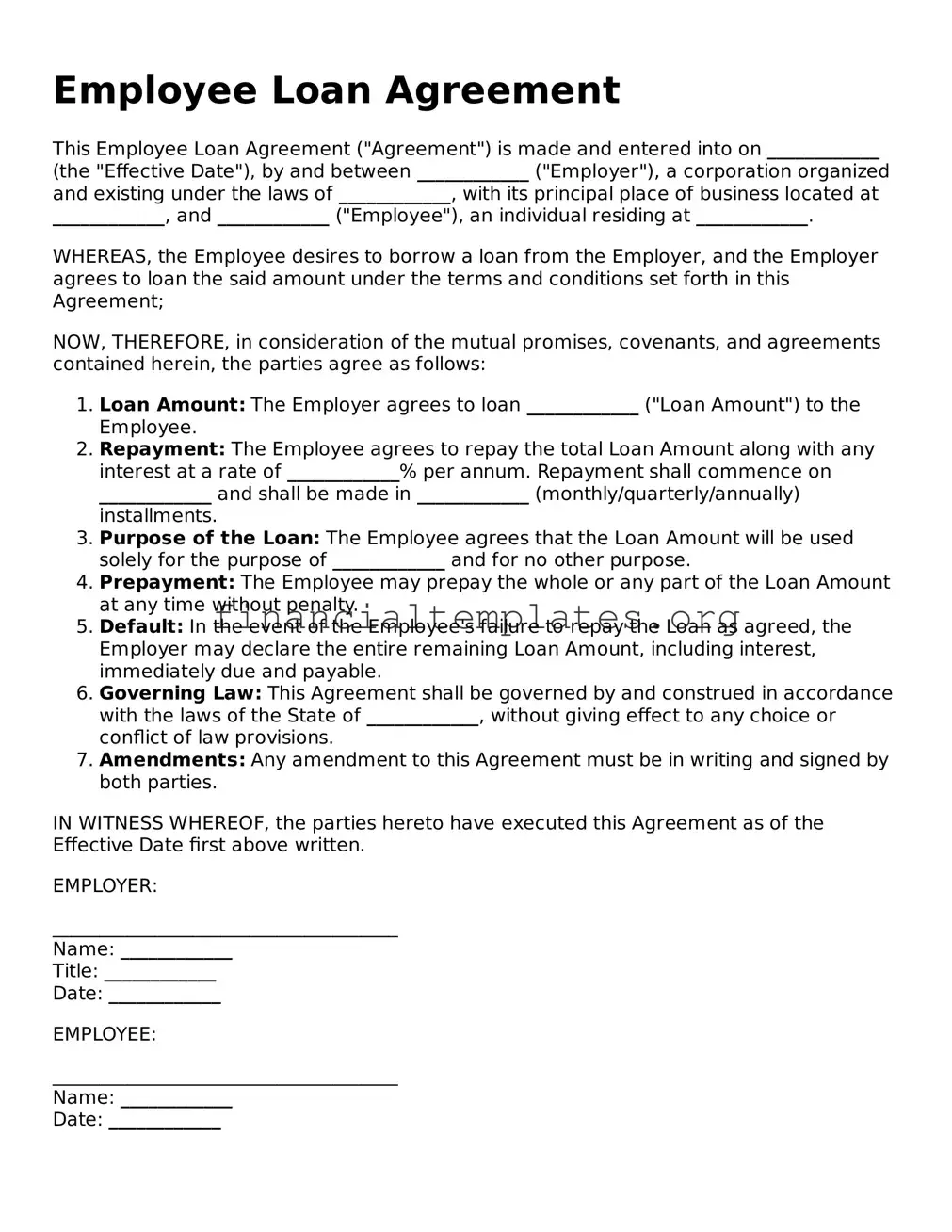Employee Loan Agreement
This Employee Loan Agreement ("Agreement") is made and entered into on ____________ (the "Effective Date"), by and between ____________ ("Employer"), a corporation organized and existing under the laws of ____________, with its principal place of business located at ____________, and ____________ ("Employee"), an individual residing at ____________.
WHEREAS, the Employee desires to borrow a loan from the Employer, and the Employer agrees to loan the said amount under the terms and conditions set forth in this Agreement;
NOW, THEREFORE, in consideration of the mutual promises, covenants, and agreements contained herein, the parties agree as follows:
- Loan Amount: The Employer agrees to loan ____________ ("Loan Amount") to the Employee.
- Repayment: The Employee agrees to repay the total Loan Amount along with any interest at a rate of ____________% per annum. Repayment shall commence on ____________ and shall be made in ____________ (monthly/quarterly/annually) installments.
- Purpose of the Loan: The Employee agrees that the Loan Amount will be used solely for the purpose of ____________ and for no other purpose.
- Prepayment: The Employee may prepay the whole or any part of the Loan Amount at any time without penalty.
- Default: In the event of the Employee's failure to repay the Loan as agreed, the Employer may declare the entire remaining Loan Amount, including interest, immediately due and payable.
- Governing Law: This Agreement shall be governed by and construed in accordance with the laws of the State of ____________, without giving effect to any choice or conflict of law provisions.
- Amendments: Any amendment to this Agreement must be in writing and signed by both parties.
IN WITNESS WHEREOF, the parties hereto have executed this Agreement as of the Effective Date first above written.
EMPLOYER:
_____________________________________
Name: ____________
Title: ____________
Date: ____________
EMPLOYEE:
_____________________________________
Name: ____________
Date: ____________
